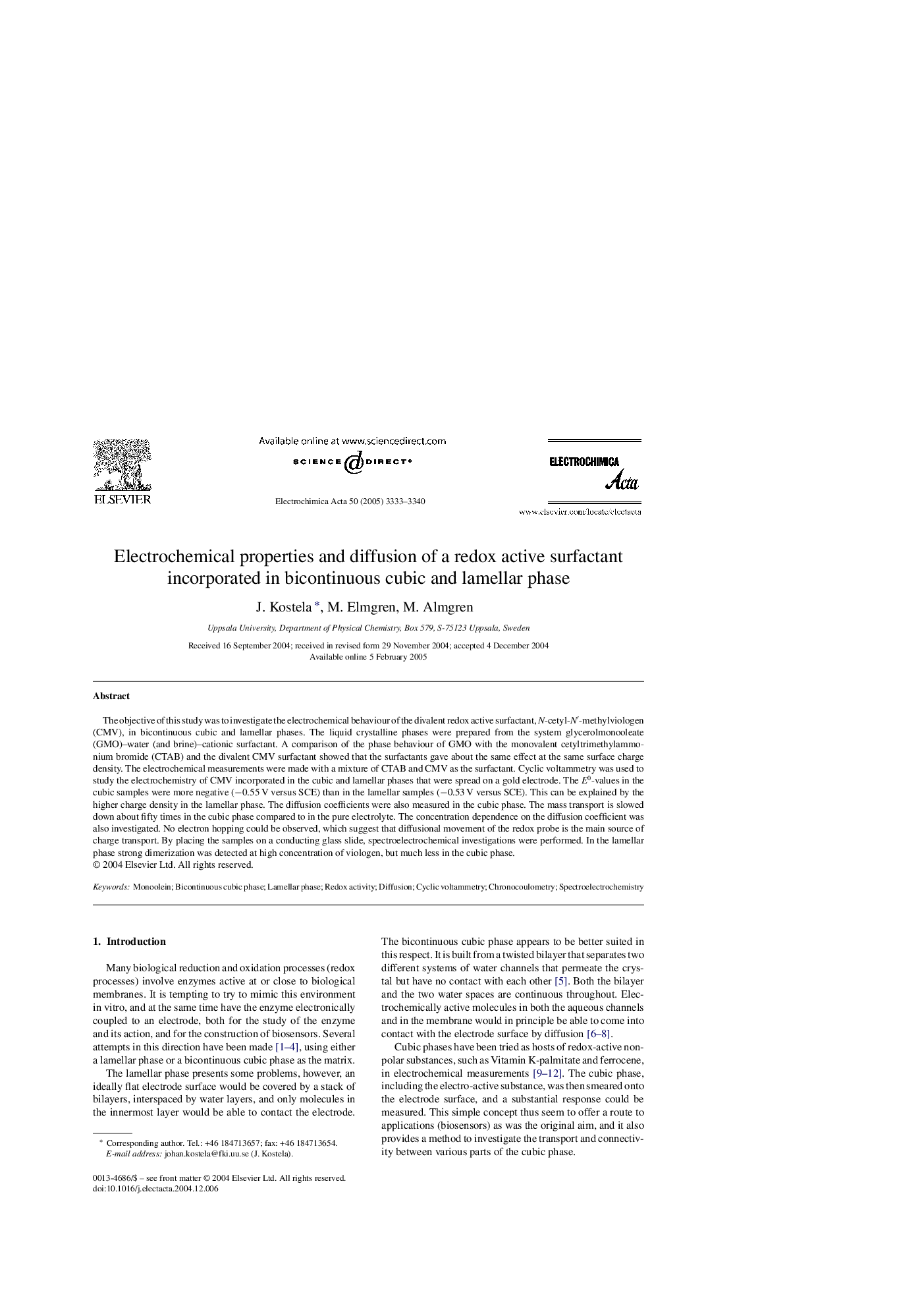| Article ID | Journal | Published Year | Pages | File Type |
|---|---|---|---|---|
| 196721 | Electrochimica Acta | 2005 | 8 Pages |
The objective of this study was to investigate the electrochemical behaviour of the divalent redox active surfactant, N-cetyl-N′-methylviologen (CMV), in bicontinuous cubic and lamellar phases. The liquid crystalline phases were prepared from the system glycerolmonooleate (GMO)–water (and brine)–cationic surfactant. A comparison of the phase behaviour of GMO with the monovalent cetyltrimethylammonium bromide (CTAB) and the divalent CMV surfactant showed that the surfactants gave about the same effect at the same surface charge density. The electrochemical measurements were made with a mixture of CTAB and CMV as the surfactant. Cyclic voltammetry was used to study the electrochemistry of CMV incorporated in the cubic and lamellar phases that were spread on a gold electrode. The E0-values in the cubic samples were more negative (−0.55 V versus SCE) than in the lamellar samples (−0.53 V versus SCE). This can be explained by the higher charge density in the lamellar phase. The diffusion coefficients were also measured in the cubic phase. The mass transport is slowed down about fifty times in the cubic phase compared to in the pure electrolyte. The concentration dependence on the diffusion coefficient was also investigated. No electron hopping could be observed, which suggest that diffusional movement of the redox probe is the main source of charge transport. By placing the samples on a conducting glass slide, spectroelectrochemical investigations were performed. In the lamellar phase strong dimerization was detected at high concentration of viologen, but much less in the cubic phase.
